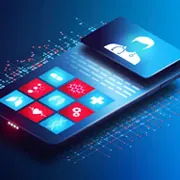Outsource Technical Analysis Process at O2I
Many a software project has failed due to an incomplete or inaccurate analysis process, especially technical analysis. Technical Analysis is a key step while developing a software application. It can be useful to-
- Confirm with the customer that we have gathered all business requirements accurately, and begin with designing and building the application after approval from the customer.
- It can be used by the Designers and Developers as a reference when building the application.
- It can be used by the client to verify that the final application actually matches what was initially agreed upon.
Components of Technical Analysis
There are two parts to Technical Analysis – drafting an Application Specification Document and generating Use Cases.
An Application Specification Document is usually derived from the Requirements Documentation from a Business Analyst. This document briefly specifies various features of the application, details parameters of how the application will be built, etc.
A sample structure of an Application Specification Document for a typical Web Development project would be as follows:
- Introduction
- Background
- Purpose
- Scope
- Definitions, Acronyms and Abbreviations
- References
- Overview
- Overall Description
- Use-Case Model Survey
- Assumptions and Dependencies
- Specific Requirements
- Non-functional Requirements
- Browser Compatibility
- Layout
- Graphics and Web Design
- Resolution
- Log History Analysis
- Cookies
- SMTP Server
- Secure Sockets Layer
- Accessibility
- Performance
- Payment Schedule
Depending on the project, you may need to elaborate or discard a few of these points but generally, this is how a Software Requirements Specification is laid out. It shows the intended behavior of the project and behavior can be expressed in the form of tasks, functions or services.
Use Cases
Use Cases are documents that help capture and detail requirements of the project. They are usually written in casual English for easy comprehension but when required, Flow Charts, Pseudo-Code, etc may be used to explain features in the Use Case. Use Cases are now a widespread practice that originally came from the Object-Oriented Programming Community.
Use Cases define goal-based relationships between actors and various functions in the application. An actor is a term that comes from UML. They are the external entities who use the application – visitors, administrators, staff, an external interacting application, etc. There are usually two types of actors – a Primary actor and a Secondary actor. A Primary Actor is one who requires assistance of the system for their goal to be satisfied. A Secondary Actor is one who the system needs assistance from in order to help Primary Actors achieve their goal.
Every Use Case needs to describe in detail the necessary interaction required between various actors and the application in order to deliver a service that satisfies an actor's goal. A Use Case also needs to detail any possible alternate flows that could help an actor satisfy his goal. Alternate flows also need to describe methods that could lead to a failure of the application due to errors, etc.
System Internals are not part of a Use Case. A Use Case merely describes the actor, an actor's possible interaction with the application, optionally the goal that the actor may have set out to achieve and various ways of achieving it.
There are many formats for Use Cases. A sample Use Case for a login feature would be as follows:

Terminology
The Use Case ID is a unique ID given to each Use Case for future reference.
The Actors Involved section points to the various actors that can access the Use Case.
The Basic Flow of the Use Case details the interaction that needs to happen between the Primary Actor and the Application.
The Alternative Flow details possible failures of the Basic Flow, and how they should be handled.
Special Requirements specify if there are any requirements that the functionality needs – for example, “Needs to be SSL secured”, etc.
Pre-Conditions define conditions that must be true before the Use Case can be accessed. For example, “User must visit the Member Login Page”, “User must have logged into the system to access this panel”, etc.
Post-Conditions define what happens when everything goes right.
Extension Points define other Use Cases that this Use Case touches on. For example, if the Username/Password is validated and the Use Case is successful, they are redirected to the Member Panel. The “Member Panel” is a separate Use Case and hence defined here as an Extension Point. These are typically underlined links that take the reader directly to the Extension Point.
Technical Analysis is a key step in ensuring the success of your software project, and is essential in understanding the technical requirements of your proposed software project.
Dedicated business analysts at O2I possess comprehensive expertise in all domains - technology, process and business strategy.
Our Related Services
Outsource your Software Consulting to India
Do you require high value software consulting services? Why not consider outsourcing to India? Indian software consultants offer carefully analyzed, dynamic software solutions that will bridge the gap between your business vision and organizational processes.
Read more about O2I's Requirements Analysis Process and Project Quality Process.
Inquire Here with your requirements and our Client Engagement Team will contact you in 24 hours.
Get a FREE QUOTE!
Decide in 24 hours whether outsourcing will work for you.
Have specific requirements? Email us at: ![]()
Key Differentiators
Testimonials Business
Analysis Business Modeling
Process at O2I Software
Development Expertise Software
Development Team Project
Quality Standards Clinical Trial
Software Development Telecom
Software Gaming
Software Viral Marketing
Game Development Application
Development Process Technical
Analysis Process e-Learning
Solutions Process Project
Management Process Tools & Technologies J2EE
Programming Service Oriented
Architecture Database
Management Systems
 Outsource2india Enabled a Hospital Chain in the US to Streamline Internal Communication Via a Top-notch Team App
Outsource2india Enabled a Hospital Chain in the US to Streamline Internal Communication Via a Top-notch Team App Outsource2india Provided Excellent Workday Support Services to a US-based Real-Estate Client
Outsource2india Provided Excellent Workday Support Services to a US-based Real-Estate Client Outsource2india Empowered a Dubai-based Client to Streamline Workflow with Outstanding SN App Integrations
Outsource2india Empowered a Dubai-based Client to Streamline Workflow with Outstanding SN App Integrations Outsource2india Developed a Ticketing Software Using ServiceNow for a US-based Firm
Outsource2india Developed a Ticketing Software Using ServiceNow for a US-based Firm Outsource2india Helped a Data Analytics Company with Power BI Solutions
Outsource2india Helped a Data Analytics Company with Power BI Solutions Outsource2india Provided ServiceNow Solutions to a UAE-based Logistics Firm
Outsource2india Provided ServiceNow Solutions to a UAE-based Logistics Firm















